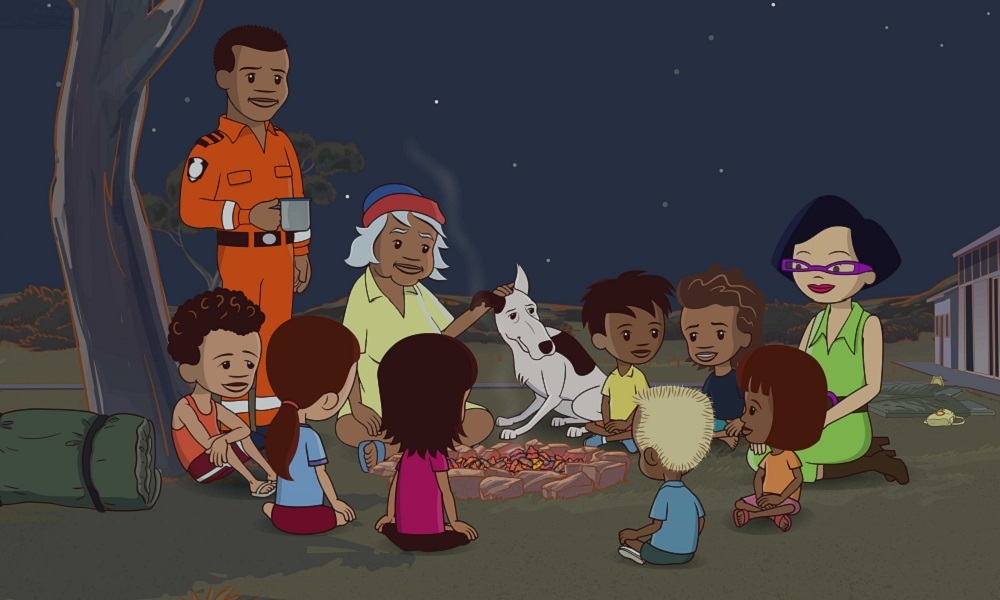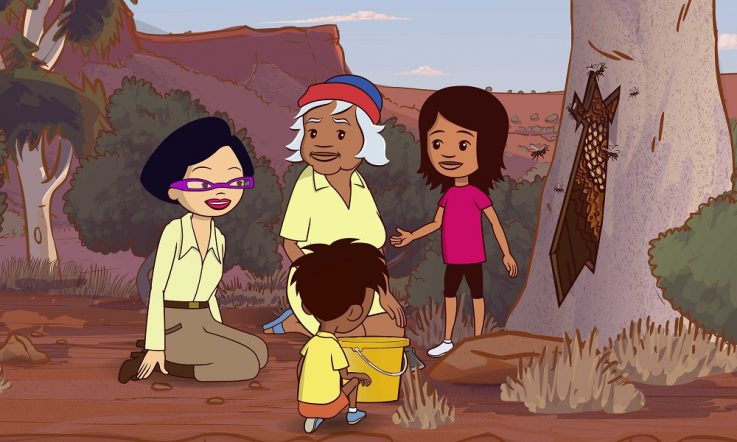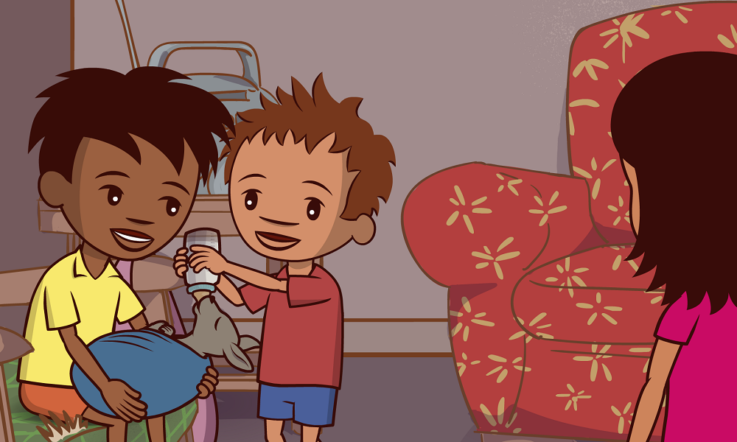NAIDOC Week is a chance for schools in Australia to celebrate the rich histories, diverse cultures and achievements of Aboriginal and Torres Strait Islander people.
The official celebrations run from 4-11 July, but there are lots of teaching and learning resources that can be used throughout the year.
This year’s theme
The theme for 2021 is Heal Country! It was chosen by the National NAIDOC Committee and is described as a call for all ‘to continue to seek greater protections for our lands, our waters, our sacred sites and our cultural heritage from exploitation, desecration, and destruction’, and embrace First Nations cultural knowledges and understanding of Country.
The 2021 National NAIDOC Poster has been designed by Gubbi Gubbi artist Maggie-Jean Douglas and is titled Care for Country. NAIDOC organisers explain the artwork ‘includes communities, people, animals and bush medicines spread over different landscapes of red dirt, green grass, bush land and coastal areas to tell the story of the many ways Country can and has healed us throughout our lives and journeys’.
You can download a free copy of the NAIDOC 2021 poster at the link.
Teaching resources
SBS Learn (an Official Education Partner for NAIDOC Week) has produced a teacher resource guide and downloadable PDF booklet. Authored by Shelley Ware and developed with support from Associate Professor Lynette Riley, the resources explore key Aboriginal and Torres Strait Islander perspectives, peoples, histories and stories.
The resources are split into six levels of schooling (Foundation, Years 1&2, Years 3&4, Years 5&6, Years 7&8 and Years 9&10) and there are Australian Curriculum subject links to English, HASS (Humanities and Social Sciences), The Arts and Science as well as the cross-curriculum priority of Aboriginal and Torres Strait Islander Histories and Cultures.
They feature questions for discussion, NAIDOC-themed activities, links to resources and clips for classroom viewing, extension activities, suggested reading and information on further teacher professional learning.
‘An effective way to run classroom sessions using this resource is for the teacher to become a facilitator, so that the students drive the learning. If this is a new way of running a learning opportunity it might feel strange to begin with, but stick with it,’ the guide advises.
‘Having your students drive the learning is a powerful way to engage students and let them demonstrate their knowledge. The teacher does not always need to be the knowledge holder. The teacher’s role is also to make sure that everyone is respectful to each other, and that everyone who wants to contribute constructively can be heard.’
It adds, wherever you can, invite Traditional Owners, Elders and Aboriginal and Torres Strait Islander community members into school to talk about the NAIDOC theme and share their perspectives, knowledge and experience.
Daily viewing for the early years
The teacher resource guide includes a section for Jarjums – an Aboriginal word for ‘children’ or ‘young ones’. One suggested activity for early childhood educators is to set aside time each day to watch an episode of Logie award-winning animation Little J & Big Cuz, including those translated into Indigenous languages, with English subtitles.
Little J & Big Cuz models the day-to-day running of an early primary classroom and follows the adventures of the two main characters, their nanna and lovable dog, and their teacher Miss Chen. Storylines are aligned with the Australian Early Years Learning Framework and accompanied by free resources for educators.
With two seasons already available for viewing, there’s plenty to last through NAIDOC Week and beyond. Season One is available in seven languages – Pitjantjara, Arrernte, Palaw kani, Yawuru, Walmajarri, Djambarrpuyngu and English. Season Two is available in Noongar, Torres Strait Creole, Warlpiri, Palawa Kani, Gija, Djambarrpuyngu and English.
The series was conceptualised by the ACER Foundation, the charitable arm of the Australian Council for Educational Research (ACER). Season One was developed in partnership with Ned Lander Media, SNAICC, NITV, Screen Australia, Screen Tasmania, Film Victoria, the Australian Children's Television Foundation, Dusseldorp Forum and Lotterywest, and Season Two was further supported with principal production investment from NITV in association with the ABC.
‘For everyone involved in Little J & Big Cuz it was important that we translate the series into as many languages as possible,’ Lisa Norris, Director of the ACER Foundation, tells Teacher. ‘Reconciliation Australia, in their ‘Let’s talk... Languages’ article, describes the importance of First Language revitalisation and its connections to better outcomes for Indigenous children, their families and communities.
‘We decided very early on in the project that re-voicing language was a crucial marker of success for us. We wanted to give communities the opportunity to translate and re-record the episodes so that children could hear their language spoken by the characters. Language is such an important way to keep knowledge alive, as it is a vital connection to culture, community, identity and Country.’
ABC Me is screening Little J & Big Cuz on weekday mornings throughout NAIDOC week. Episodes are also available on ABC iview in English and Indigenous languages. NITV (channel 34) is screening Little J & Big Cuz every morning from 5-11 July and episodes are available on NITV/SBS on Demand in English and Indigenous languages.
How is your school celebrating NAIDOC Week? What opportunities exist to invite Traditional Owners, Elders and Aboriginal and Torres Strait Islander community members into your school to share their perspectives, knowledge and experiences?
The teaching resources mentioned in this article can be used throughout the year with students from Foundation Year 10. With a colleague, take a look at the activities – how can you integrate one or more into your teaching for the rest of the school year?



